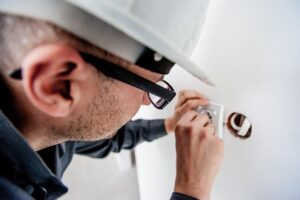Electric Stove Repair and Stove & Ranges in Everyday Homes
Electric stove repair is one of the most requested services among Long Island households. Many families rely on electric appliances for everyday cooking. When these units fail, the kitchen becomes difficult to manage. Understanding how stoves and ranges work helps homeowners spot signs of failure early. That way, they can prevent damage and avoid high costs.
Stoves and ranges are essential in most kitchens. The stove refers to the cooktop. The range includes both the stove and the oven. These terms are often used together because many models are built as a single unit. Whether gas or electric, the appliance must operate reliably. Knowing the differences between the two systems makes it easier to handle repairs when they become necessary.
How Gas and Electric Stoves Work
Gas stoves produce heat through open flame. They use natural gas or propane to power the burner. When the knob turns, gas is released, and the igniter sparks a flame. Most gas stoves operate manually, though some have electric igniters.
Electric stoves, on the other hand, use resistance-based heating. Electricity runs through a coil or element, which heats the cooking surface. Some models have coil burners, while others feature smooth glass tops. Newer ranges often include touch controls or digital displays.
These two systems perform the same basic function. However, they differ in speed, control, and maintenance. Each system also presents its own risks and repair challenges.

Common Repair Issues with Gas Stoves
Gas stoves have fewer electronic parts. This makes some repairs straightforward. However, safety must always be a priority when working with gas.
Common gas stove problems include:
- Burner fails to ignite
- Igniter clicks repeatedly without lighting
- Flame burns unevenly or too low
- Burner produces a yellow flame
- Gas smell near the appliance
- Control knob does not engage properly
Most of these problems relate to the igniter, valve, or gas flow. In some cases, the burner cap may be dirty or misaligned. In other cases, a faulty igniter or valve may need replacement. If you smell gas or hear hissing, turn off the stove and call a technician right away.
Common Repair Issues with Electric Stoves
Electric stove repair requires careful diagnosis. These units contain wiring, control boards, switches, and sensors. Each part plays a role in how heat is generated and controlled.
Common problems include:
- Burner does not heat
- Burner overheats or shuts off mid-use
- Control knob is unresponsive
- Display does not function
- Element is cracked or worn
- Circuit breaker trips when stove is used
These signs usually indicate a damaged heating element, faulty switch, or issue with internal wiring. Surface elements can also become loose or disconnected. For glass-top stoves, the heating element may fail without visible signs.
Which Stove Type Is Easier to Repair?
It depends on the situation. Gas stoves are often easier to repair for mechanical issues. Igniters, burners, and valves are typically accessible and replaceable. However, working with gas lines requires training.
Electric stove repairs involve more electrical components. Diagnosing wiring faults or replacing control boards may take longer. That said, many parts are available and can be replaced on-site.
Newer models of both stove types may include digital controls or smart features. These systems can add complexity and increase repair time. An experienced technician will know how to navigate both types of systems safely.
Safety Considerations During Stove Repair
Safety is always the most important concern. For gas stoves, a damaged connection or loose valve can cause leaks. If you smell gas or suspect a leak, do not try to fix it. Leave the area and contact a professional.
For electric stoves, the risks involve shock or fire. Do not touch the stove while it is connected to power. Always turn off the breaker before inspecting or testing components.
At Rapid Appliance Repair, our technicians are trained and certified to handle both gas and electric repairs. We follow all local codes and safety standards to protect your home.
Comparing Repair Costs
Repair costs depend on the appliance, the problem, and the parts needed. In general:
- Gas stove repairs cost less when the problem is simple
- Electric stove repairs vary based on the model and technology
- Smart features or digital panels raise the cost of parts
- Labor time also affects total repair cost
For example, replacing a gas igniter may be quick and affordable. Replacing a control board on an electric range may take longer and cost more. Still, most repairs are far less expensive than replacing the unit.
When to Repair vs. Replace
Repair is the better option when:
- The stove is less than 10 years old
- Only one or two parts need attention
- The model is still supported with parts
Consider replacement when:
- The unit is over 15 years old
- Repairs exceed half the cost of a new appliance
- The model is discontinued or parts are unavailable
If you’re unsure, schedule a diagnostic service. We’ll evaluate the condition and recommend the best course of action.
Tips to Prevent Stove Breakdowns
Routine care extends the life of your stove. Here are a few simple habits:
- Clean burners and coils after cooking
- Wipe down control panels to prevent buildup
- Keep vent openings clear
- Use the correct cookware
- Schedule yearly inspections for older units
These steps reduce wear and make it easier to spot problems early.
Working with a Local Repair Company
Local companies understand the homes, appliances, and energy systems in your area. At Rapid Appliance Repair, we serve homes across Long Island. We specialize in stove & ranges, including all major brands.
We offer fast scheduling, clear pricing, and professional service. Whether you need a new element or help with a gas leak, our team is ready to help.
For official safety standards and local appliance guidelines, visit the NYC Department of Buildings.
Frequently Asked Questions
- How long does stove repair take?
Most repairs take one to two hours, depending on the issue. - Can I fix the stove myself?
Minor cleaning is fine. Leave complex repairs to a trained technician. - What causes electric burners to fail?
Worn heating elements or bad switches are common causes. - Should I replace my 15-year-old stove?
If repairs are frequent, replacement may be more cost-effective. - Are replacement parts easy to find?
Yes, for most brands and models still in production.
Call Now to Book Your Consultation
If your stove or range is not working, don’t wait. Call Rapid Appliance Repair at 516-670-1800 to schedule a service visit today. We repair both gas and electric models, and we serve all of Long Island.


